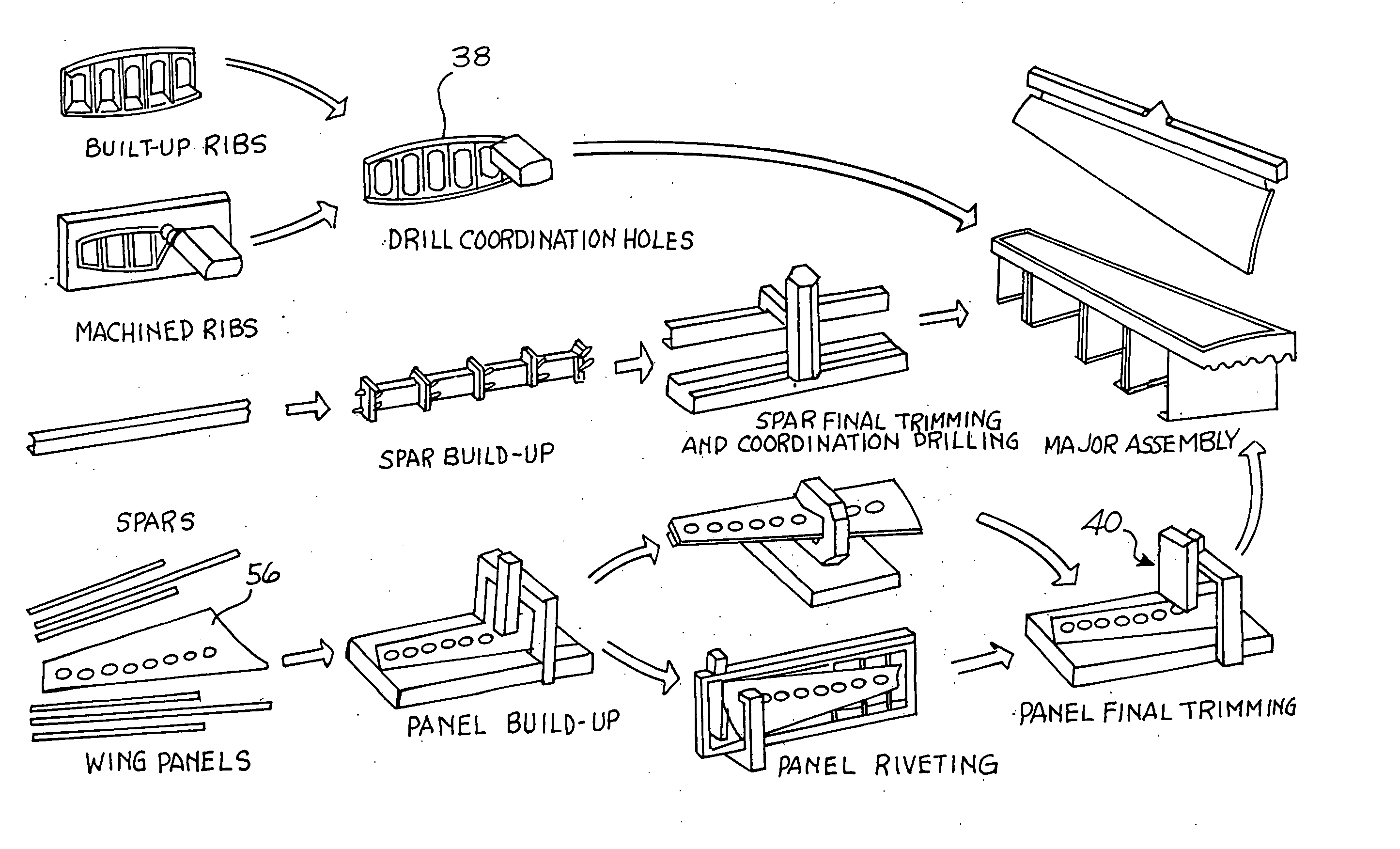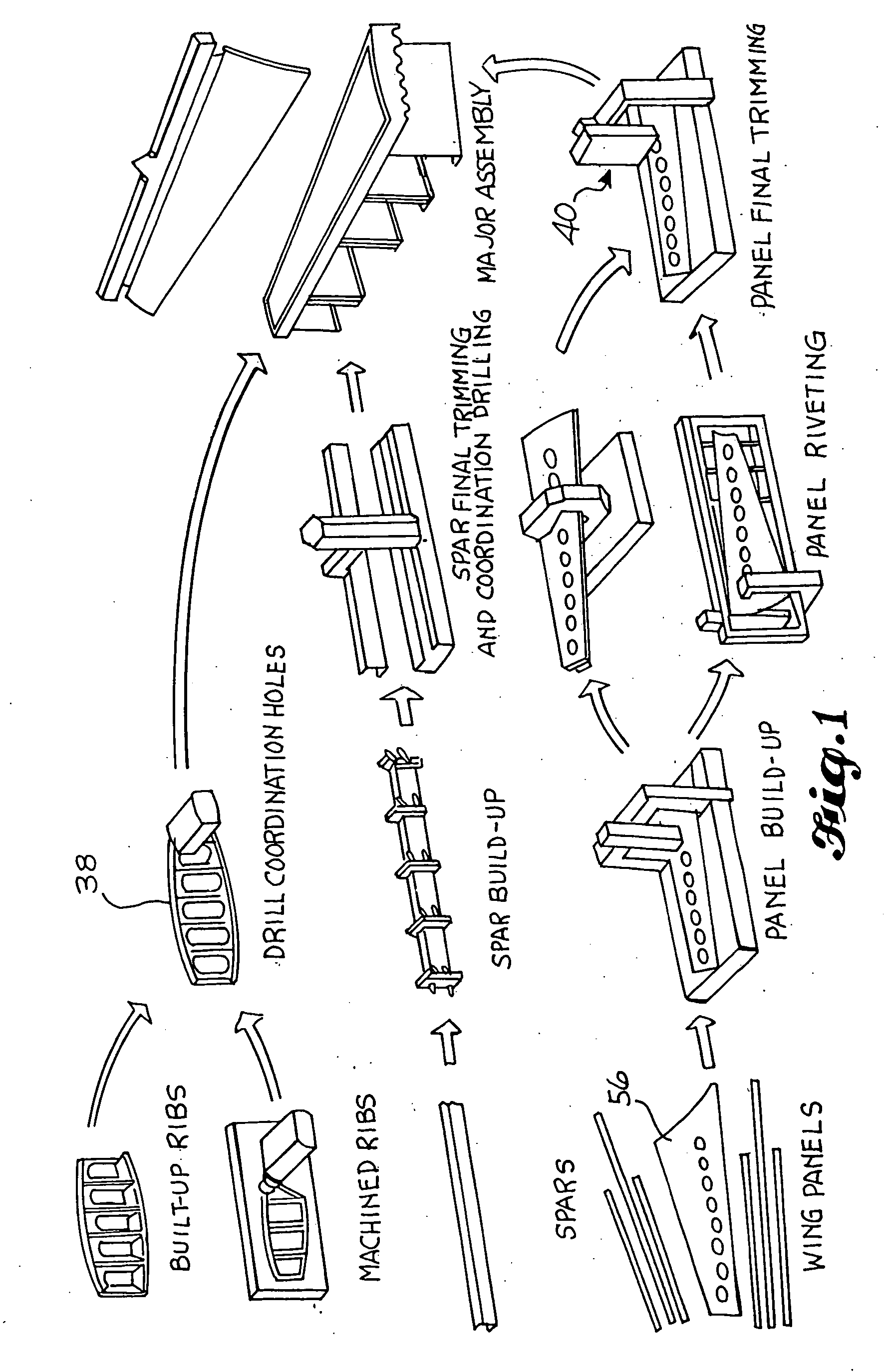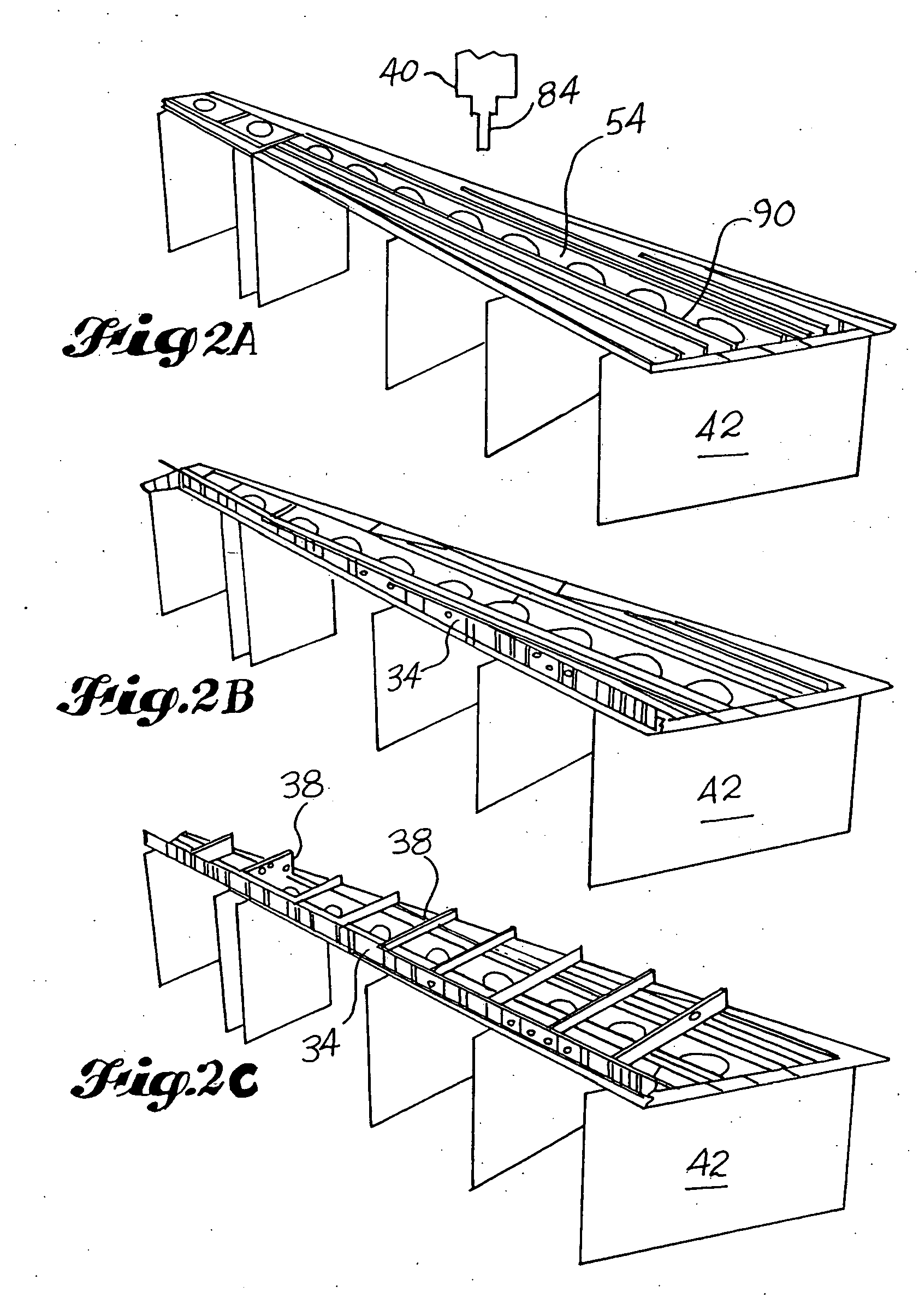Determinant wing assembly
a wing assembly and determinant technology, applied in the field of determinant wing assembly, can solve the problems of significant growth from the original design dimension, tool that was originally built within tolerance can be distorted out of tolerance from the hard use it typically receives in the factory, and parts that lack the strength and fatigue durability of round holes drilled normal to the part surfa
- Summary
- Abstract
- Description
- Claims
- Application Information
AI Technical Summary
Benefits of technology
Problems solved by technology
Method used
Image
Examples
Embodiment Construction
[0039] The invention is described as applied to a preferred embodiment, namely, a process of assembling airplane wings. However, it is contemplated that this invention has general application to the assembly of parts into major assemblies where adherence to a specified set of dimensional tolerances is desired, particularly—where some or all of the parts and subassemblies are flexible or semi-flexible.
[0040] Referring now to the drawings, wherein like reference characters designate identical or corresponding parts, and more particularly to FIG. 1 thereof, top level schematic diagram illustrates the major process steps in the determinant wing assembly process according to this invention. The process begins with building the major components of the wing, including upper and lower wing panels 30 and 32, a rear spar 34 and a front spar 36, and in-spar ribs 38. The major components are brought together on a computer numerically controlled machine tool 40 and assembled as a wing in the ho...
PUM
| Property | Measurement | Unit |
|---|---|---|
| Dimension | aaaaa | aaaaa |
Abstract
Description
Claims
Application Information
 Login to View More
Login to View More - R&D
- Intellectual Property
- Life Sciences
- Materials
- Tech Scout
- Unparalleled Data Quality
- Higher Quality Content
- 60% Fewer Hallucinations
Browse by: Latest US Patents, China's latest patents, Technical Efficacy Thesaurus, Application Domain, Technology Topic, Popular Technical Reports.
© 2025 PatSnap. All rights reserved.Legal|Privacy policy|Modern Slavery Act Transparency Statement|Sitemap|About US| Contact US: help@patsnap.com



